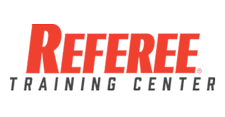Observers are at games for one of two basic reasons: to evaluate your performance, looking for trouble spots where you could improve. That type of observer is usually at the game on behalf of a local association, league, conference or group that has an interest in seeing improved officiating. The other reason is to evaluate your performance as a way of ranking you among your peers. That type of observer is often there on behalf of a league, conference, association or other group that is looking to assign the best officials to certain games, such as a state tournament or a conference championship.
Most any person observing officials and filling out a rating form of some sort will have key components of excellent officiating in mind. There are three basic key ingredients that should be developed in some form.
Knowledge: Knowing the rules, officiating mechanics and strategy of the game. Exceptional knowledge often means that an official knows the rules of the sport so thoroughly that intricate aspects of the rules can be recalled in an instant.
Application: The bringing to bear of many skills to get successful results. How does the official apply his or her knowledge?
Comportment: Exhibiting self-conduct that leads to effective performance. That component of officiating is the hardest characteristic to define because it encompasses many of the behaviors displayed toward the game itself.
Where should you start in your development of a rating form for your association?
Step 1 — Develop a committee for your officials to specifically deal with ratings forms. Multiple ratings forms might be developed (rookie, advanced, master, etc.) depending upon your organization. Organize those committees with specific inclusion of sport leaders if your organization serves multiple sports.
Step 2 — Look to those around you for guidance. There’s no need to recreate the wheel in this instance. Many organizations have already created ratings forms and you can utilize some of those forms and tweak them for your organization. Visit naso.org to download a sample rating form.
Step 3 — Make the ratings form as specific as possible. Categorizing “mechanics” as a whole lessens the results an official might be able to get from the form. Drill down into specific areas (such as positioning, coverage, signals, posture, appearance) for more specific action areas.
Step 4 — Once sample ratings forms have been developed, let the association have a chance to review. More often than not, the form developed will be satisfactory if the committee has done its due diligence. But if not, changes can be made before the ratings forms are filled out.
Step 5 — Make sure that the evaluator’s name and the date and location of the specific game are included. Ample space should be given for comments to help further elaborate on specific areas of expertise or needed improvement.
Step 6 — Once the committee has developed the form and determine its usage, you’ll need a centralized contact person to store the information. Look for trends in evaluations and you might be able to develop future training toward areas in need of improvement.





